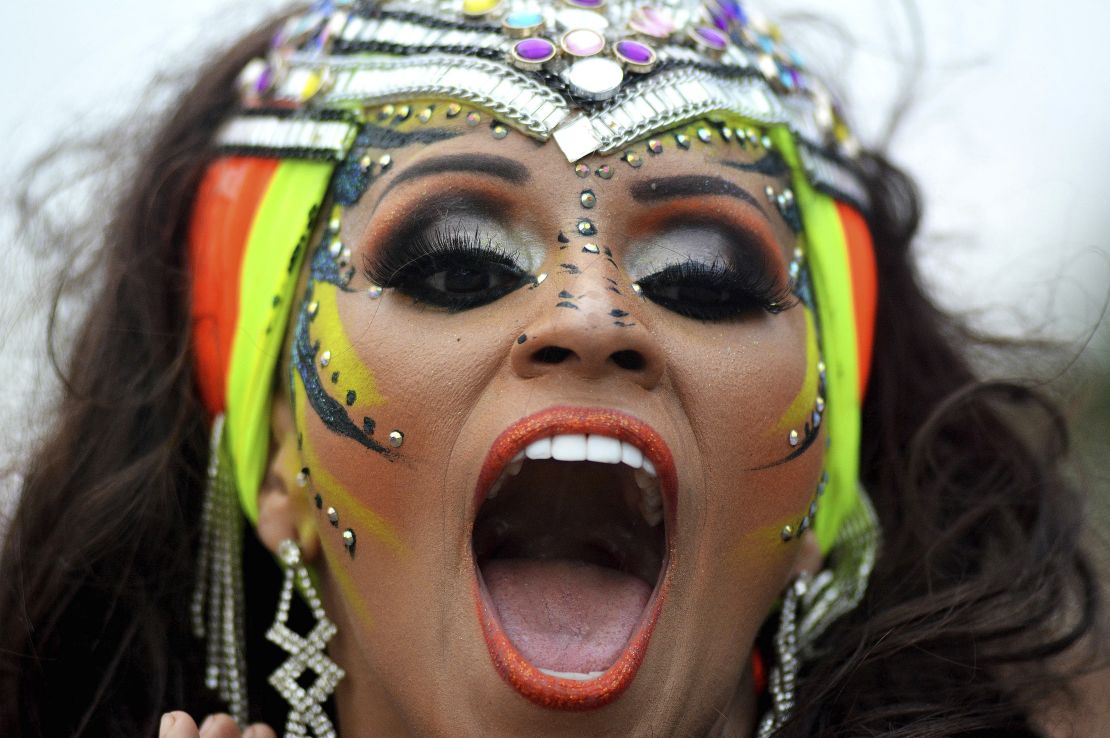Bikinis, bare skin, face paint, feathers. Pretty much what you’d expect from Rio Carnival, right? Well, sure.
But the world’s most famous carnival doesn’t have a monopoly on feather frenzies.
In the coastal Colombian city of Barranquilla, one of the world’s largest spectacles of dance and cultural pageantry, gives Rio a run for its money.
El Carnaval de Barranquilla is a spectacular display of Colombian customs and colors, with a Caribbean twist.
The four-day celebration, which ran February 6 through 9, 2016, rivals the headline-grabbing festivities of the world’s largest party in Rio de Janeiro.
Organizers in Barranquilla work all year to prepare for what they claim is the world’s second-largest carnival celebration, behind Rio.
Barranquilla attracts 1.5 million revelers throughout the carnival’s duration, according to Carla Celia, director of the Carnaval de Barranquilla.
The commercial Caribbean port city swells to accommodate visitors from across the world coming to witness some 25,000 performers.
“Hotels reach 98% occupancy and the city creates 20,000 direct and indirect jobs,” Celia says.
‘Caribbean self’ celebrated

The first day of the carnival, known as the Batalla de Flores, which saw a 600,000-strong crowd this year, is the largest and most diverse of the festivities, incorporating costumes, music and dances that portray the 220 years of the carnival’s history.
Indigenous and African cultures are emphasized, similar to the carnival in Rio.
What makes Barranquilla’s carnival distinct are what organizers call its “13 different musical expressions” that, even if from African or other roots, are imbued with Colombian colors and flare.
People from all walks of society perform in the parades.
“It’s great to see all types of Colombian people come together,” says Saskia Werner, an attendee from the Netherlands. “It makes Colombia a beautiful place.”
Big Carib
Carnaval de Barranquilla has a tone that’s distinctly Caribbean, setting the Colombia of the coast apart from the Colombia of the mountains.
The carnival “shares common sentiments in joy, music and awareness of the Caribbean self,” says Celia.
Like Mardi Gras, Barranquilla’s events include characters that bring viewers into a fantasy world, while kicking up laughs at the same time.
This year, performers in full costume parodied the Zika outbreak, El Chapo, late Venezuelan president Hugo Chavez and even Pope Francis, a surprising affront in a staunchly Catholic nation.
In a festival that aims to celebrate all the joys of life, laughter is an obvious and welcome ingredient.
10 things to know before visiting Colombia
Freelance writer Justin Calderon’s work has appeared in The New York Times, Newsweek (Japan), Global Post, Borneo Post and The Nation (Bangkok).











